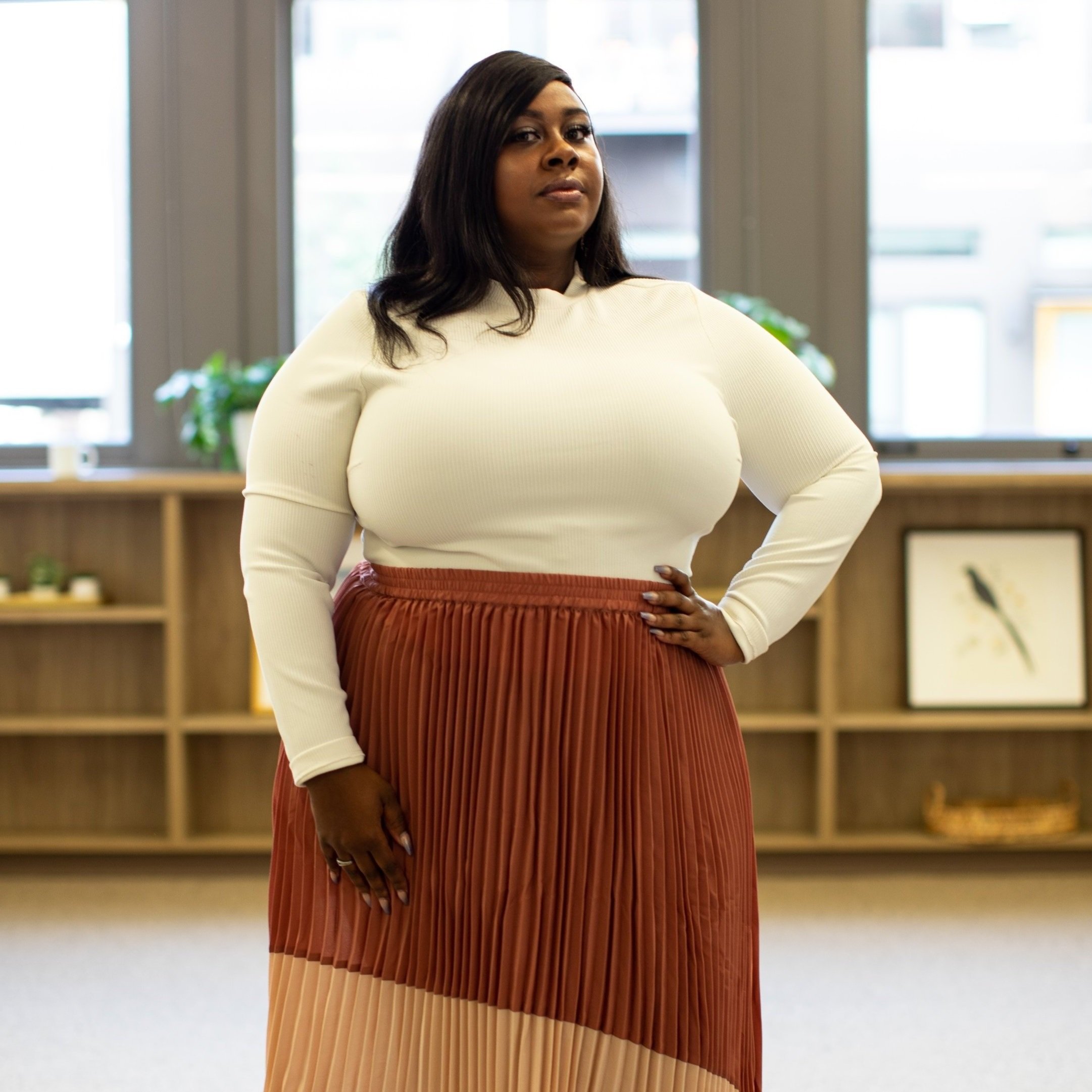Shopping Sustainably When Plus-Size
Let’s not sugarcoat it: the sustainable fashion sector, like much of the fashion industry, is failing the plus-size community. Take sustainable brand Reformation as one of many examples – although I would love to support a company that recycles 75% of their textiles and has transparent sustainability practices, on top of being uber trendy, I am simply not their target demographic. Their largest size is a US size 12, while I am the size of the average American woman, a size 16. Although they announced the addition of extended sizes in late 2021, a look at their website reveals that their extended sizes collection is significantly pared down in comparison to their selection of straight sizes.
On the other hand, plus-size brand Torrid carries clothing from sizes 10 to 30 but does not publish information about its sustainability practices. Good on You, which manages a directory of sustainability ratings that scores brands based on their impact on people, the planet, and animals, rated Torrid as a brand to avoid.
So, what are sustainably minded, plus-size people to do?
Several sustainable fashion brands are stepping up to answer. Girlfriend Collective, an activewear brand, carries up to a size 6XL. It uses eco-friendly materials, including recycled plastic and ECONYL, to produce contemporary, high-quality athletic gear and swimsuits.
If athleisure is not your thing, Selkie has a collection of ethereal dresses that are fit for a fairy tale. The company is guided by an ethos of size diversity and carries up to a size 5XL. They aim to produce as little waste as possible by avoiding mass production.
For more day-to-day wear with an eclectic twist, there is Lucy & Yak, which carries sizes 4 to 32. Its adorable and functional selection is sourced from a high proportion of sustainable materials, and it has reduced its climate impact by using renewable energy throughout its supply chain.
One thing about me: I play around with my style a lot. I have tried-and-true looks that I return to, but I am susceptible to trends and I go through fashion phases. Clothing rental services are an excellent option for people like me. I am a Nuuly subscriber, whose stock originates from shops like Urban Outfitters, Anthropologie, and Free People. Although those brands are not taking as significant steps towards waste reduction or climate neutrality as other brands, renting clothing reduces the amount of textile waste you might be producing, especially if you tend to cycle through clothes.
Thrifting is not as easy as a clothing rental service where you can pick out looks from your couch, but it is the simplest, and usually most affordable, option. With some elbow grease and time, you can find unique pieces in cuts and styles that are sometimes just not made anymore. Staying mindful is key – thrifting for the sake of a good deal or in excess can have the same ramifications as fast fashion consumption. Individual actions have an impact, but ultimately, real change lies in the hand of the companies. As consumers, we have shown through our support and our dollars that we want more sustainable and size-inclusive options – it is time for the fashion industry to take note.



